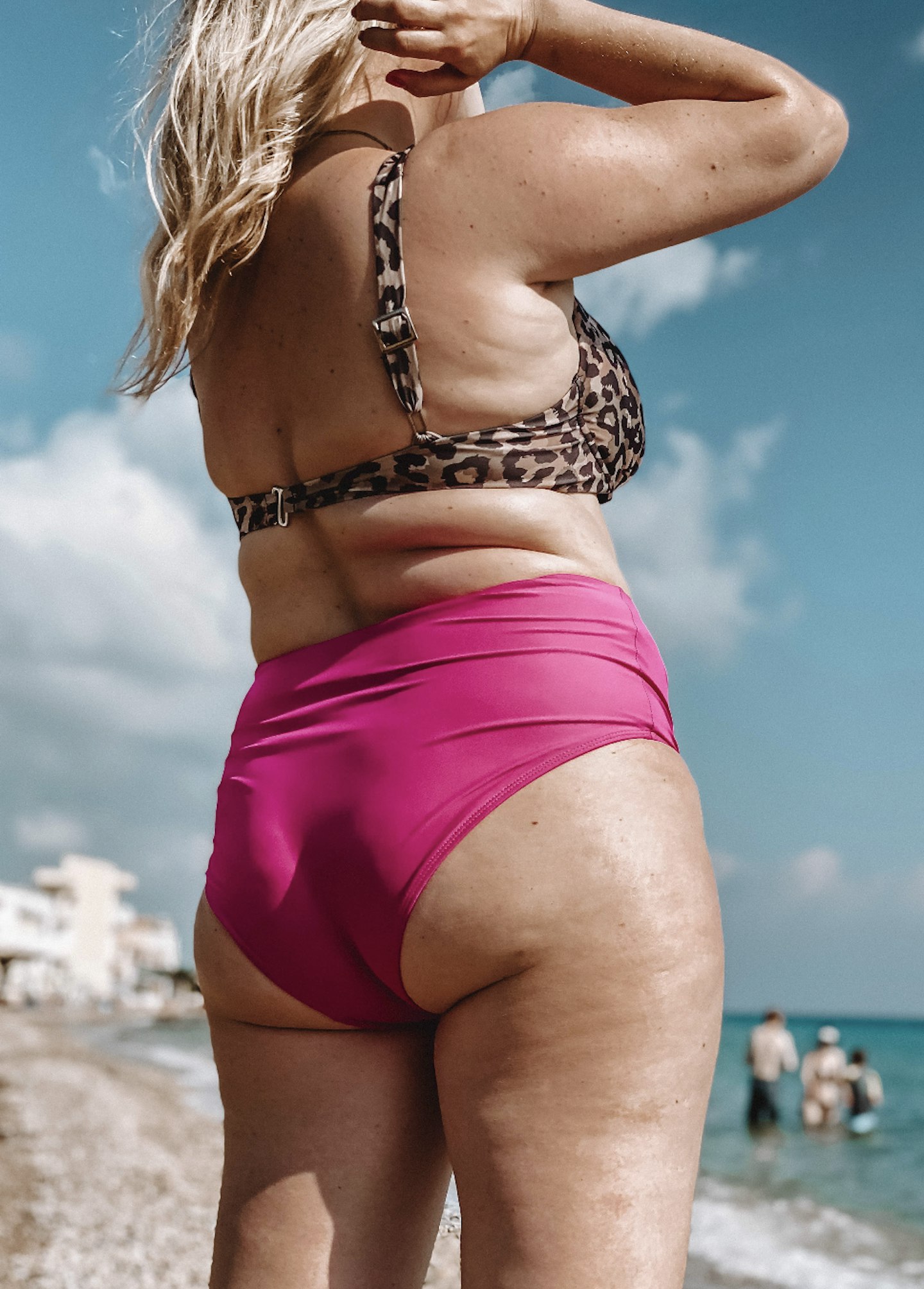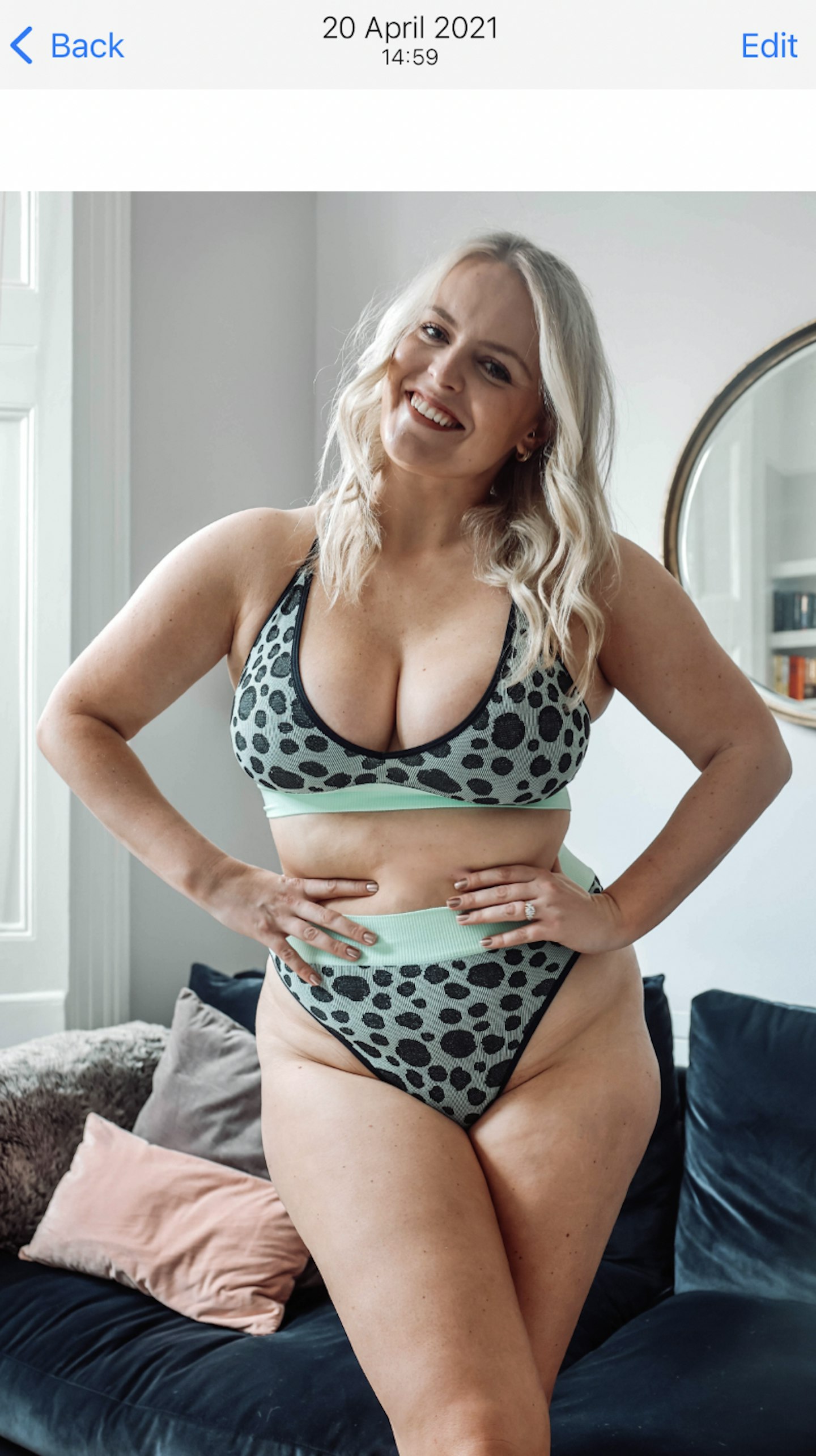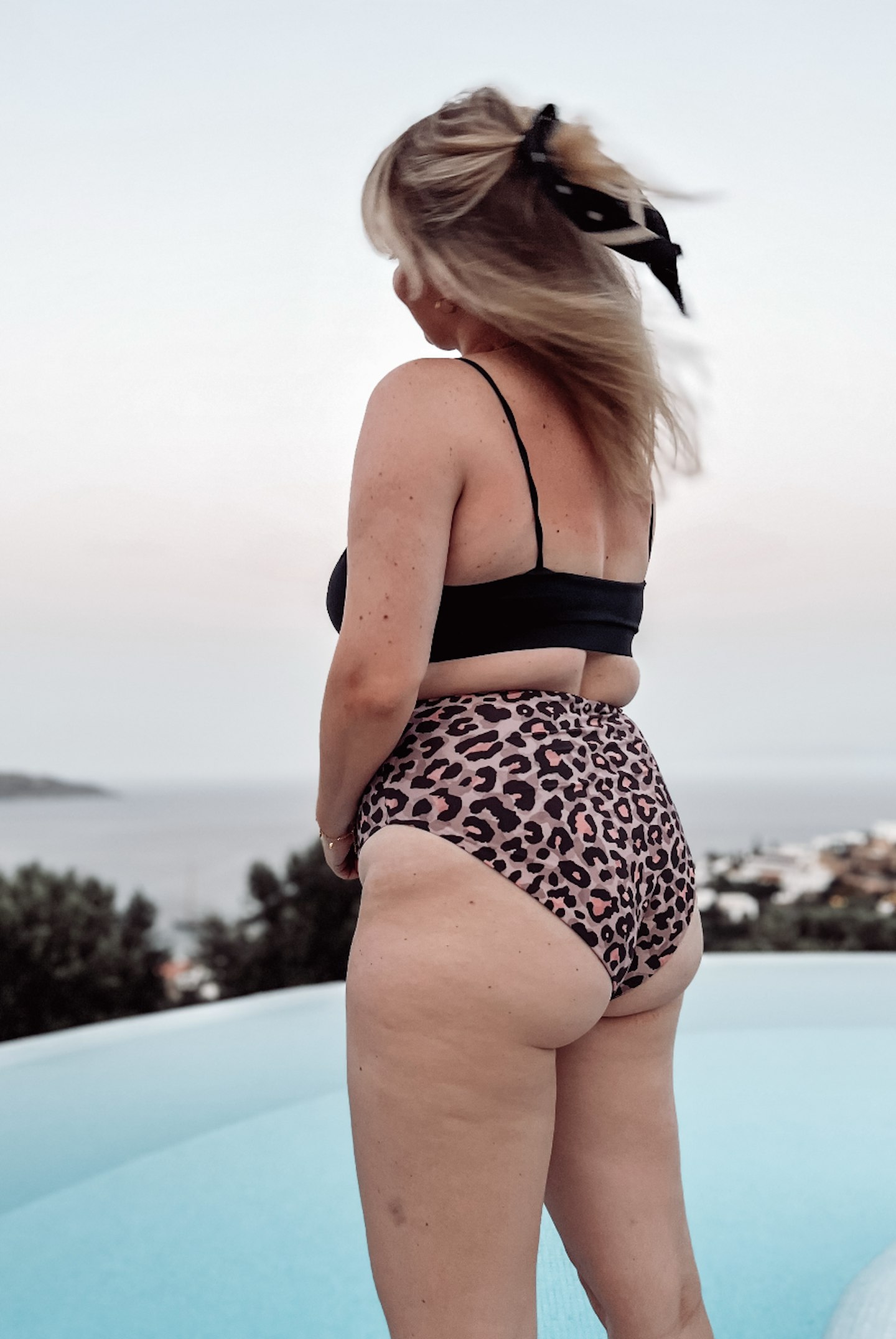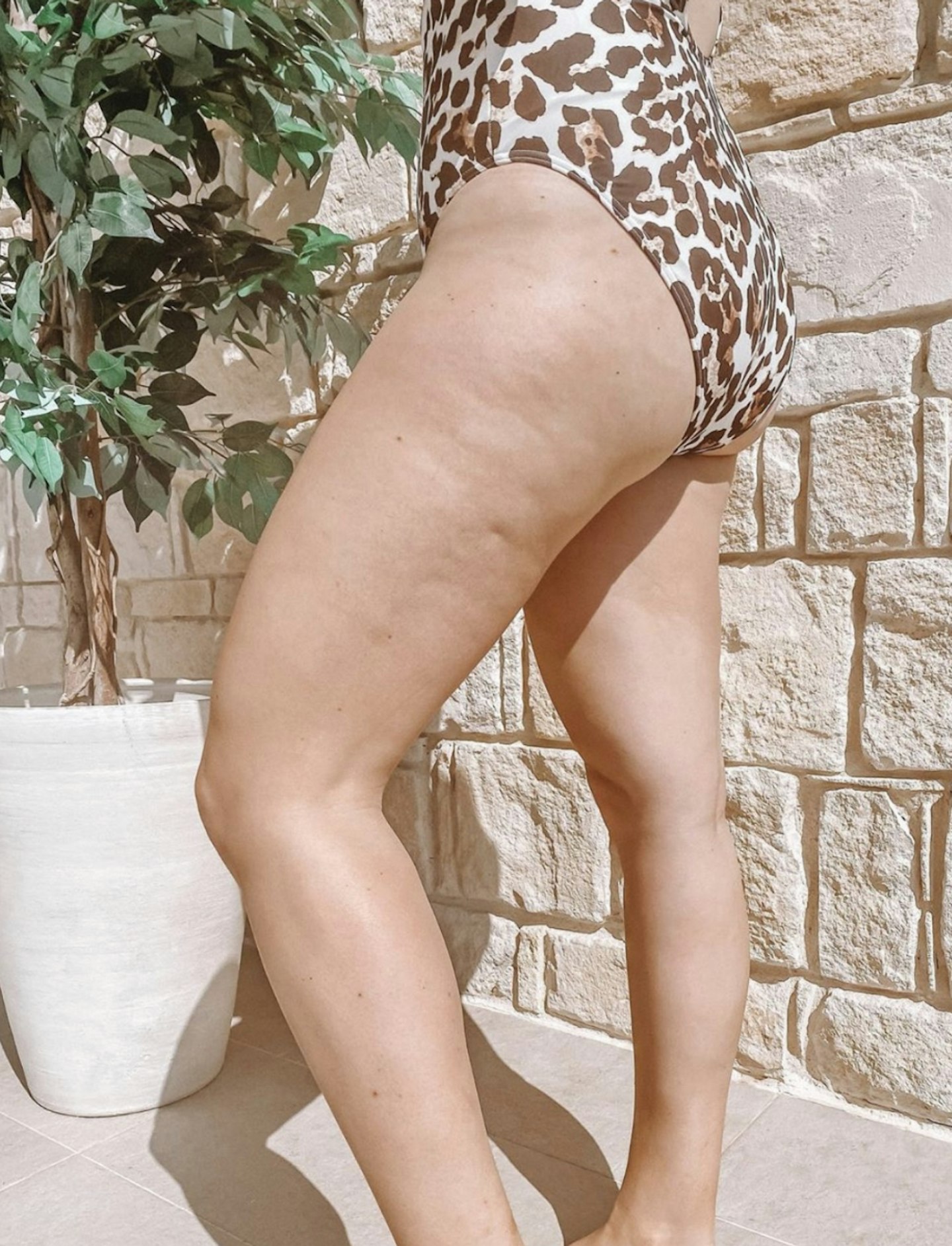We see women’s bodies everywhere: plastered across billboards, filtered into our feeds, our screens and in ads that don’t even have anything to do with bodies. We’ve seen a thousand versions of the ‘ideal body’ before we’ve even had breakfast. But you know what we don’t see? Cellulite. Even though it’s reported that up to 90% of women have it, it’s totally erased: airbrushed out, smoothed over or just carefully avoided. Which makes no sense. It's not rare, it’s not unhealthy and it’s not something that needs ‘fixing’. It’s just part of having a human body - specifically, a woman’s body.
And that’s an important distinction, because cellulite disproportionately affects women and only 10% of men. The reason for this is biology: women’s connective tissue is structured differently, with vertical collagen bands that allow fat to push through more easily. This creates the dimpled appearance of cellulite. Men’s collagen, meanwhile is arranged in a criss-cross pattern, which holds the fat more tightly. This anatomical difference combined with fat distribution, hormone levels (particularly oestrogen) and skin thickness means that cellulite shows up more visibly and more frequently on women’s bodies.
Yet, despite its biological normalcy, cellulite has been treated as a flaw and, even worse, sold to us as one. The term ‘cellulite’ didn’t even exist in the English-speaking world until the 1960s. But then came a beauty article in Vogue, which described cellulite as a ‘problem’ in need of a solution. Cue the emergence of an entire industry built on selling anti-cellulite creams, devices, supplements and treatments.

It’s a very profitable trick that we’ve seen play out time and time again: take something ordinary, frame it as undesirable, then sell women the fix. Wrinkles, stretch marks, pores, body hair… Insecurity sells.
When something is framed as undesirable for long enough, it becomes not just unattractive, but shameful, too. Cellulite has been so rigorously positioned as a flaw that many of us view it with fear and embarrassment. When we’re constantly told something is ‘wrong’, we start to believe it.
For a while, the body positivity movement challenged this. In the 2010s, we saw women posting unfiltered images, openly showing their cellulite and rejecting the idea that it was something to be ‘fixed’. I distinctly remember seeing Ashley Graham upload a post that showed the cellulite on her thighs in 2017. ‘I’m not ashamed of a few lumps, bumps or cellulite.. and you shouldn’t be either,’ she wrote. I stared at that photo for so long. It felt revolutionary – a powerful, beautiful, successful woman not only refusing to hide what I’d spent years hiding, but owning it unapologetically. I realised then that maybe cellulite didn’t have to be a secret. And I wasn’t the only one: I watched as thousands of comments rolled in, thanking Ashley for sharing the very thing we’d all been made to feel ashamed of.

I was part of that movement, showing off the cellulite on my legs with pride. It felt bold, liberating and like we were finally claiming our bodies back.
But then, the pendulum swung back. Cellulite was nudged back into ‘unacceptable’ territory with the cultural shift towards thinness. Re-stigmatised and back to being a beauty taboo.
And that’s the contradiction so many of us are now living in: we were told to love our bodies and reassured that things are changing, and now we’re being told that actually, our bodies do still need fixing. Cellulite included.
Brands understand this tension, and so, instead of rejecting body insecurities altogether (this, of course, does not line pockets!), they’re trying to straddle both sides: offering a hint of ‘empowerment’ while still selling the same old beauty ideal. The result is messaging that’s even more insidious. It's dressed up in inclusion but still rooted in shame.
Take, for example, the current ads for the Feel Smooth Skin supplement on Instagram. Marketed as a wellness product, it promises ‘firm, smooth, dimple-free skin’, tapping into every insecurity we’ve been taught to have about cellulite. The branding is soft, the language is wrapped in self-care and the campaign imagery shows a hint – and I must stress, just a hint– of cellulite here, and a fat roll there… It’s just enough to signal relatability, but not enough to actually reflect the reality of most women’s bodies.

The packaging has changed, but the message hasn’t: your body isn’t quite good enough as it – but don’t worry! We can help you fix it.
And so we go back to hiding it, back to smoothing it out and back to thinking we’re the only ones who have it, even though – again! – up to 90 per cent of women do.
That’s the quiet damage of this erasure: when something is missing from our screens, it sends the message that it should be missing, that it’s wrong, and we internalise the silence as shame. Girls grow up without seeing bodies that look like theirs and women feel pressure to closely monitor their bodies in order to keep ‘imperfections’ under wraps…We question ourselves instead of questioning the systems that taught us to feel ashamed in the first place.

And this is precisely where the responsibility lies – not with women to ‘own’ or ‘celebrate’ their cellulite online (although that representation is of course amazing and always welcome) but with the media, the brands, the platforms and the industries that continue to shape the narrow standard of what is deemed beautiful.
Because if you’re going to use women’s bodies to sell everything under the sun, the very least you can do is show them as they actually are, in all their glory.
Cellulite isn’t the problem; pretending it doesn’t exist is.
Grazia beauty panel member Alex Light is an influencer and author who addresses body image, self-acceptance, and the harmful impacts of diet culture. Having struggled with eating disorders influenced by societal beauty standards, she now advocates for body confidence in women and girls, helping her audience move away from restrictive ideals. This passion led her to write the Sunday Times Bestseller You Are Not A Before Picture. As someone who became a mother for the first time earlier this year, her content also deals with the benefits and challenges that come with motherhood and how that intersects with beauty. Alex is a fashion and beauty creator on social media, having previously been a journalist for leading industry titles and subsequently has created an engaged community of over 500K people across her Instagram channel as well as TikTok where she shares creative content pieces as well as each episode of her chart topping podcast, Should I Delete That which she co-hosts with Em Clarkson. @alexlight
